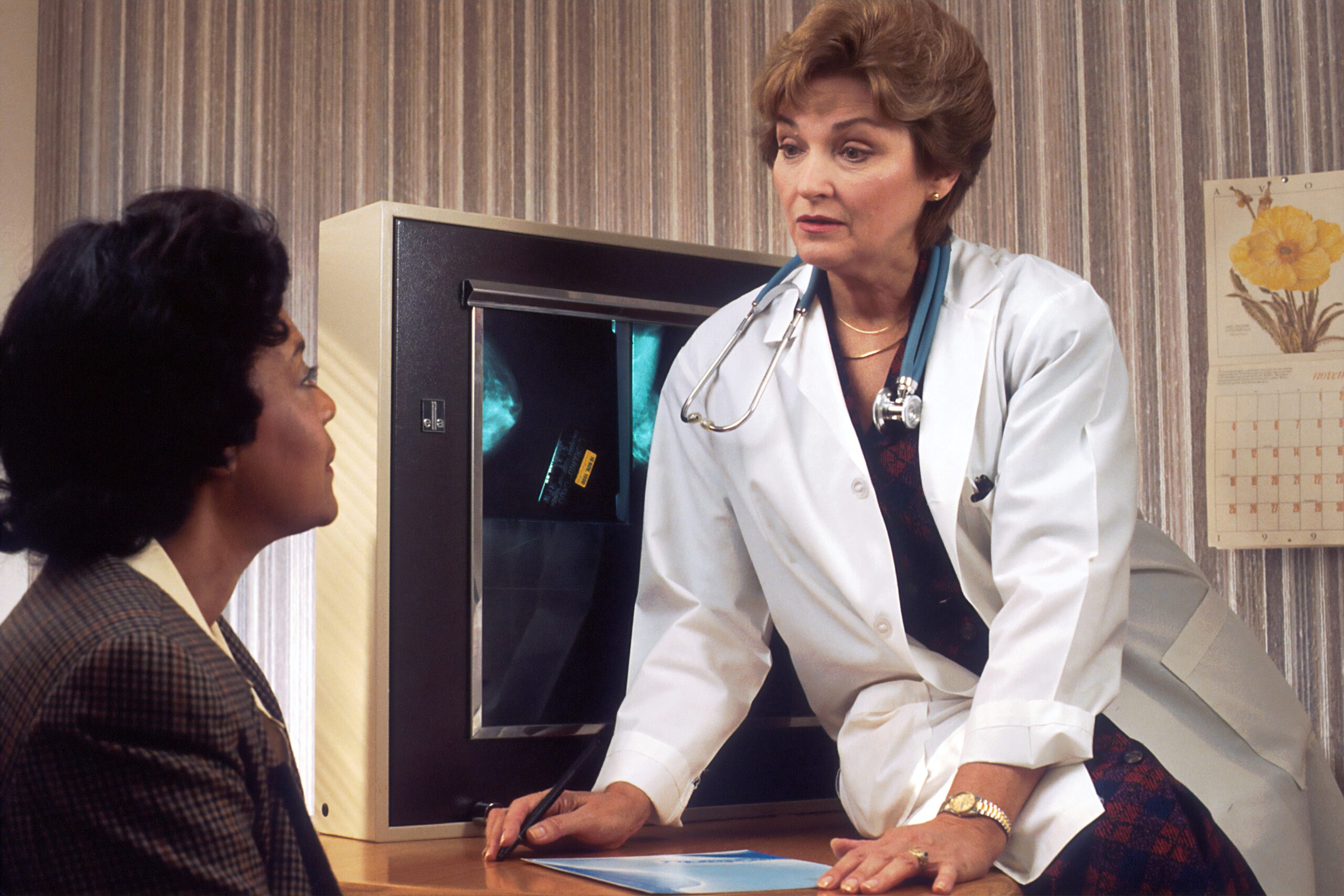So, you've recently received the news that you have recurrent prostate cancer. It can certainly be a daunting and overwhelming situation, but fret not! In this article, we will explore the various treatment options available for recurrent prostate cancer. From hormone therapy and chemotherapy to radiation and immunotherapy, there are numerous approaches that can help in managing and combating the disease. Join us as we delve into the world of prostate cancer treatment options and discover what could be the best course of action for you.

Understanding Recurrent Prostate Cancer
Definition of recurrent prostate cancer
Recurrent prostate cancer refers to the return of cancer cells in the prostate after initial treatment. When cancer cells are not completely eradicated during the primary treatment, they can resurface and cause a relapse. Understanding the definition of recurrent prostate cancer is crucial in order to grasp the different treatment options available.
Causes and risks of recurrence
The causes of recurrent prostate cancer can vary from patient to patient. In some cases, the cancer cells may have survived the initial treatment due to factors such as their ability to resist the treatment or the presence of microscopic cancer cells that were not detected during the first diagnosis. Additionally, certain risk factors can predispose individuals to a higher likelihood of experiencing recurrent prostate cancer, including a high initial prostate-specific antigen (PSA) level, large tumor size, extracapsular extension, and positive surgical margins.
The difference between local and systemic recurrence
When discussing recurrent prostate cancer, it is important to distinguish between local and systemic recurrence. Local recurrence refers to the reappearance of cancer cells in the prostate gland or the surrounding tissues, such as the seminal vesicles or lymph nodes in the pelvis. Systemic recurrence, on the other hand, occurs when the cancer cells spread beyond the prostate to distant organs, such as the bones and lungs. The distinction between local and systemic recurrence plays a significant role in determining the most appropriate treatment options.
Symptoms of Recurrent Prostate Cancer
Physical signs of recurrence
Recognizing the physical signs of recurrent prostate cancer is essential for early detection and prompt intervention. Some common physical signs include urinary symptoms such as increased frequency, urgency, blood in urine, or difficulty in urination. Additionally, patients may experience erectile dysfunction, pelvic pain, or bone pain, especially in cases where the cancer has spread to the bones.
Measuring PSA levels
Prostate-specific antigen (PSA) levels are a vital tool in monitoring the progression of prostate cancer and detecting recurrence. An increase in PSA levels can indicate the presence of residual or recurrent cancer cells. Regular PSA testing, often done through a blood test, allows healthcare professionals to closely monitor the disease and make informed treatment decisions based on the trend of PSA levels over time.
Importance of regular follow-up appointments
Regular follow-up appointments are crucial for individuals who have been previously treated for prostate cancer. These appointments, which typically involve physical exams and PSA testing, enable healthcare providers to closely monitor patients for signs of recurrence. Early detection of recurrent prostate cancer through regular follow-up appointments can ensure timely intervention and potentially improve treatment outcomes.
Diagnostic Tests for Recurrent Prostate Cancer
The role of PSA testing in diagnosis
PSA testing plays a vital role in diagnosing recurrent prostate cancer. When PSA levels rise after initial treatment, it indicates the possibility of cancer recurrence. Consistent tracking of PSA levels over time helps determine the necessity for further diagnostic tests and guides treatment decisions. However, it is important to consider other factors such as the patient's clinical symptoms and medical history in conjunction with PSA levels to ensure accurate assessment.
Imaging tests used
Imaging tests are valuable in diagnosing recurrent prostate cancer and determining the extent of the disease. Common imaging techniques used include magnetic resonance imaging (MRI), computed tomography (CT) scans, and bone scans. These tests can help identify the location and spread of cancer cells, aiding healthcare providers in developing an appropriate treatment plan.
Biopsy and pathologic evaluation
A biopsy may be necessary to confirm the presence of recurrent prostate cancer. During a biopsy, a small tissue sample is taken from the prostate and analyzed under a microscope to identify cancerous cells. Pathologic evaluation of the biopsy specimen provides crucial information about the characteristics of the cancer cells, such as their aggressiveness, which is essential for treatment decisions.
Types of Treatment for Recurrent Prostate Cancer
Options based on local or systemic recurrence
Treatment options for recurrent prostate cancer depend on whether the recurrence is local or systemic. For local recurrence, treatment may include watchful waiting, radiation therapy, or surgery. Systemic recurrence may require hormone therapy, chemotherapy, immunotherapy, or targeted therapy.
Understanding watchful waiting
Watchful waiting, also known as active surveillance, may be an option for men with slow-growing or low-risk recurrent prostate cancer. It entails regular monitoring of the cancer's progression through PSA testing, physical exams, and periodic imaging tests. Watchful waiting allows patients to delay treatment until necessary, minimizing potential side effects.
Palliative care options
Palliative care aims to improve the quality of life for patients with recurrent prostate cancer by managing symptoms and providing support. This can include pain management, counseling, and assistance with emotional and practical challenges. Palliative care can be provided alongside active treatment or as the primary focus of care in advanced cases.

Hormone Therapy for Recurrent Prostate Cancer
How hormone therapy works
Hormone therapy, also known as androgen deprivation therapy, aims to reduce the levels of male hormones (androgens) in the body, such as testosterone. Since prostate cancer cells typically rely on androgens for growth, suppressing their production or blocking their effects can slow down or shrink the tumors.
Types of hormone therapy
Hormone therapy can be achieved through medications called luteinizing hormone-releasing hormone (LHRH) agonists, anti-androgens, or androgen receptor blockers. LHRH agonists help reduce the production of testosterone, while anti-androgens block the androgen receptors on the cancer cells. Combination therapy with both LHRH agonists and anti-androgens may also be utilized.
Benefits and side effects of hormone therapy
Hormone therapy can effectively control recurrent prostate cancer by shrinking tumors and slowing down disease progression. However, it may also result in side effects, including hot flashes, loss of libido, weight gain, fatigue, and potential bone thinning. Close monitoring and communication with healthcare providers can help manage these side effects and ensure optimal treatment outcomes.
Chemotherapy for Recurrent Prostate Cancer
When is chemotherapy recommended
Chemotherapy may be recommended for recurrent prostate cancer that has spread beyond the prostate gland and becomes resistant to hormone therapy. It can be used to target cancer cells throughout the body and slow down disease progression. Chemotherapy is typically considered when other treatment options have been exhausted or in cases of aggressive recurrent prostate cancer.
Types of drugs used in chemotherapy
Various drugs can be used in chemotherapy for recurrent prostate cancer, including docetaxel, cabazitaxel, and mitoxantrone. These drugs work by interfering with the growth and division of cancer cells, ultimately leading to their death. Healthcare providers determine the most suitable chemotherapy regimen based on the individual's medical history and treatment goals.
Managing side effects of chemotherapy
Chemotherapy often causes side effects such as fatigue, hair loss, nausea, and weakened immune system. However, advances in supportive care and medications have significantly improved the management of these side effects. Healthcare providers can provide strategies to mitigate discomfort and closely monitor patients during chemotherapy treatment.
Radiation Therapy for Recurrent Prostate Cancer
External beam radiation therapy
External beam radiation therapy uses a machine to deliver targeted radiation to the prostate gland and surrounding areas. It aims to destroy cancer cells and shrink tumors while minimizing damage to surrounding healthy tissues. This treatment modality is generally well-tolerated, although potential side effects may include fatigue, urinary problems, and skin irritation.
Brachytherapy or internal radiation therapy
Brachytherapy involves the placement of small radioactive seeds directly into the prostate gland. These seeds release radiation over time, effectively targeting cancer cells while minimizing exposure to healthy tissues. Brachytherapy is a viable option for localized recurrent prostate cancer and can be administered as a standalone treatment or in combination with external beam radiation therapy.
Potential side effects and managing them
Radiation therapy, whether delivered externally or through brachytherapy, can lead to side effects such as urinary issues, bowel changes, and erectile dysfunction. However, modern techniques and advances in radiation delivery have significantly reduced the occurrence and severity of these side effects. Healthcare providers work closely with patients to manage and minimize the impact of these potential side effects on quality of life.
Surgery for Recurrent Prostate Cancer
Indications for surgery
Surgery may be considered for recurrent prostate cancer that is localized and has not spread beyond the prostate gland. It aims to remove the cancerous tissue and potentially prevent further disease progression. Surgical intervention is typically recommended after considering various factors, including the patient's overall health, previous treatments, and personal preferences.
Types of surgery performed
The most common surgical approach for recurrent prostate cancer is a radical prostatectomy, which involves the complete removal of the prostate gland. This procedure can be performed using minimally invasive techniques, such as laparoscopic or robotic-assisted surgery, which offer the benefits of smaller incisions, reduced blood loss, and faster recovery.
Post-operative care and side effects
After surgery, patients may experience side effects such as urinary incontinence, erectile dysfunction, and short-term pain or discomfort. However, these side effects are usually temporary and can improve over time with proper post-operative care and rehabilitation. Healthcare providers play a crucial role in providing guidance and support throughout the recovery process.
Immunotherapy for Recurrent Prostate Cancer
How immunotherapy works
Immunotherapy is a promising treatment option that harnesses the body's immune system to target and destroy cancer cells. It utilizes medications or vaccines that stimulate the immune system's response, leading to an enhanced ability to recognize and eliminate cancer cells. Immunotherapy aims to boost the immune system's natural ability to fight cancer and provide long-term control of the disease.
Types of immunotherapy available
Immunotherapy for recurrent prostate cancer includes various approaches, such as immune checkpoint inhibitors, cancer vaccines, and adoptive cell transfer. Immune checkpoint inhibitors work by blocking proteins that cancer cells use to avoid detection by the immune system. Cancer vaccines and adoptive cell transfer involve introducing specific cancer-fighting cells or substances to enhance the immune system's response against prostate cancer cells.
Effectiveness and side effects of immunotherapy
Immunotherapy has shown promise in the treatment of recurrent prostate cancer, although its effectiveness varies from patient to patient. Some individuals may experience a significant response, leading to disease control and prolonged survival. However, like any treatment, immunotherapy can cause side effects such as fatigue, immune-related reactions, and inflammation. Close monitoring by healthcare professionals is crucial to manage these side effects and optimize treatment outcomes.
Considerations for Treatment Selection
Patient’s overall health and age
A patient's overall health and age play a significant role in determining the most appropriate treatment for recurrent prostate cancer. Factors such as existing comorbidities, medication regimens, and overall fitness level can influence treatment decisions. Healthcare providers take into account these considerations to ensure that the chosen treatment option aligns with the patient's individual circumstances.
Previous treatments used
The previous treatments received for prostate cancer, such as surgery, radiation therapy, or hormone therapy, can influence the selection of subsequent treatment options for recurrent prostate cancer. Understanding the patient's treatment history allows healthcare providers to tailor a comprehensive and effective treatment plan.
Patient's preference and quality of life considerations
Patient preference and quality of life considerations are invaluable when it comes to selecting an appropriate treatment for recurrent prostate cancer. Open communication between the patient and healthcare team is essential to understanding individual goals, concerns, and desires. Taking into account factors such as treatment side effects, expected outcomes, and personal values helps ensure that the chosen treatment aligns with the patient's overall well-being and quality of life.
In conclusion, understanding recurrent prostate cancer and the available treatment options is crucial in addressing the disease effectively. From diagnosing recurrent prostate cancer through diagnostic tests to exploring various treatment modalities such as hormone therapy, chemotherapy, radiation therapy, surgery, and immunotherapy, healthcare providers and patients can work together to make informed decisions that optimize outcomes while considering individual circumstances, preferences, and quality of life. Regular monitoring, effective communication, and ongoing support play essential roles in managing recurrent prostate cancer and providing the best possible care for patients.


